Transcription stress at telomeres leads to cytosolic DNA release and paracrine senescence
- PMID: 38744897
- PMCID: PMC11094137
- DOI: 10.1038/s41467-024-48443-6
Transcription stress at telomeres leads to cytosolic DNA release and paracrine senescence
Abstract
Transcription stress has been linked to DNA damage -driven aging, yet the underlying mechanism remains unclear. Here, we demonstrate that Tcea1-/- cells, which harbor a TFIIS defect in transcription elongation, exhibit RNAPII stalling at oxidative DNA damage sites, impaired transcription, accumulation of R-loops, telomere uncapping, chromatin bridges, and genome instability, ultimately resulting in cellular senescence. We found that R-loops at telomeres causally contribute to the release of telomeric DNA fragments in the cytoplasm of Tcea1-/- cells and primary cells derived from naturally aged animals triggering a viral-like immune response. TFIIS-defective cells release extracellular vesicles laden with telomeric DNA fragments that target neighboring cells, which consequently undergo cellular senescence. Thus, transcription stress elicits paracrine signals leading to cellular senescence, promoting aging.
© 2024. The Author(s).
Conflict of interest statement
The authors declare no competing interest.
Figures
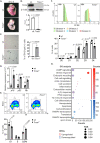
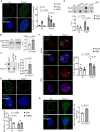
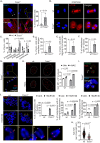
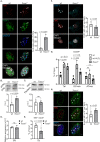
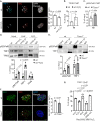
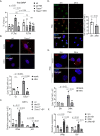
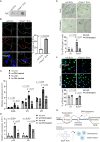
Similar articles
-
Telomeres: beacons of autocrine and paracrine DNA damage during skin aging.Cell Cycle. 2020 Mar;19(5):532-540. doi: 10.1080/15384101.2020.1728016. Epub 2020 Feb 16. Cell Cycle. 2020. PMID: 32065062 Free PMC article. Review.
-
Induced Trf2 deletion leads to aging vascular phenotype in mice associated with arterial telomere uncapping, senescence signaling, and oxidative stress.J Mol Cell Cardiol. 2019 Feb;127:74-82. doi: 10.1016/j.yjmcc.2018.11.014. Epub 2018 Nov 29. J Mol Cell Cardiol. 2019. PMID: 30502348 Free PMC article.
-
Molecular Aspects of Senescence and Organismal Ageing-DNA Damage Response, Telomeres, Inflammation and Chromatin.Int J Mol Sci. 2021 Jan 8;22(2):590. doi: 10.3390/ijms22020590. Int J Mol Sci. 2021. PMID: 33435578 Free PMC article. Review.
-
Dysfunctional telomeres trigger cellular senescence mediated by cyclic GMP-AMP synthase.J Biol Chem. 2020 Aug 7;295(32):11144-11160. doi: 10.1074/jbc.RA120.012962. Epub 2020 Jun 15. J Biol Chem. 2020. PMID: 32540968 Free PMC article.
-
Age-related telomere uncapping is associated with cellular senescence and inflammation independent of telomere shortening in human arteries.Am J Physiol Heart Circ Physiol. 2013 Jul 15;305(2):H251-8. doi: 10.1152/ajpheart.00197.2013. Epub 2013 May 10. Am J Physiol Heart Circ Physiol. 2013. PMID: 23666675 Free PMC article.
Cited by
-
Targeting DNA damage in ageing: towards supercharging DNA repair.Nat Rev Drug Discov. 2025 Jun 12. doi: 10.1038/s41573-025-01212-6. Online ahead of print. Nat Rev Drug Discov. 2025. PMID: 40506534 Review.
-
Looping forward: exploring R-loop processing and therapeutic potential.FEBS Lett. 2025 Jan;599(2):244-266. doi: 10.1002/1873-3468.14947. Epub 2024 Jun 6. FEBS Lett. 2025. PMID: 38844597 Free PMC article. Review.
References
MeSH terms
Grants and funding
LinkOut - more resources
Full Text Sources
Molecular Biology Databases
Research Materials

